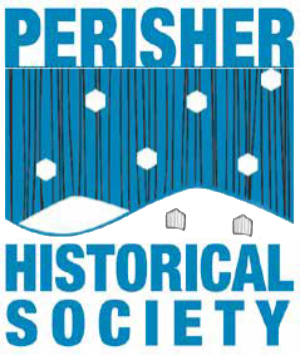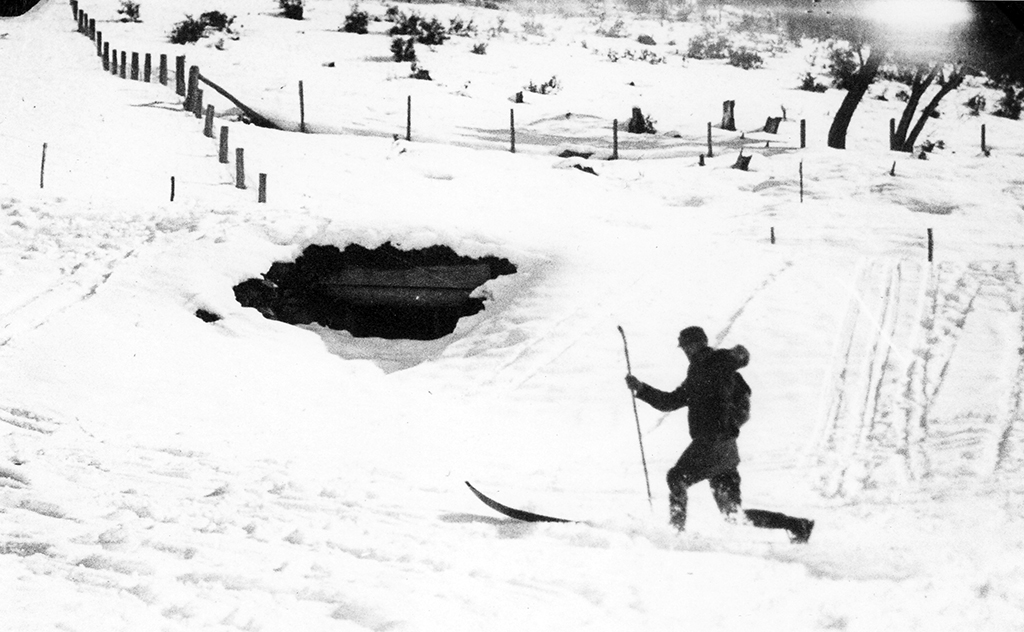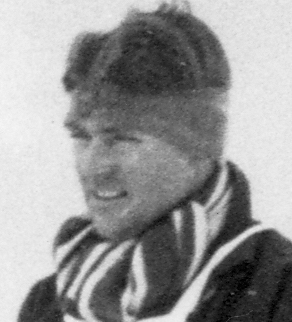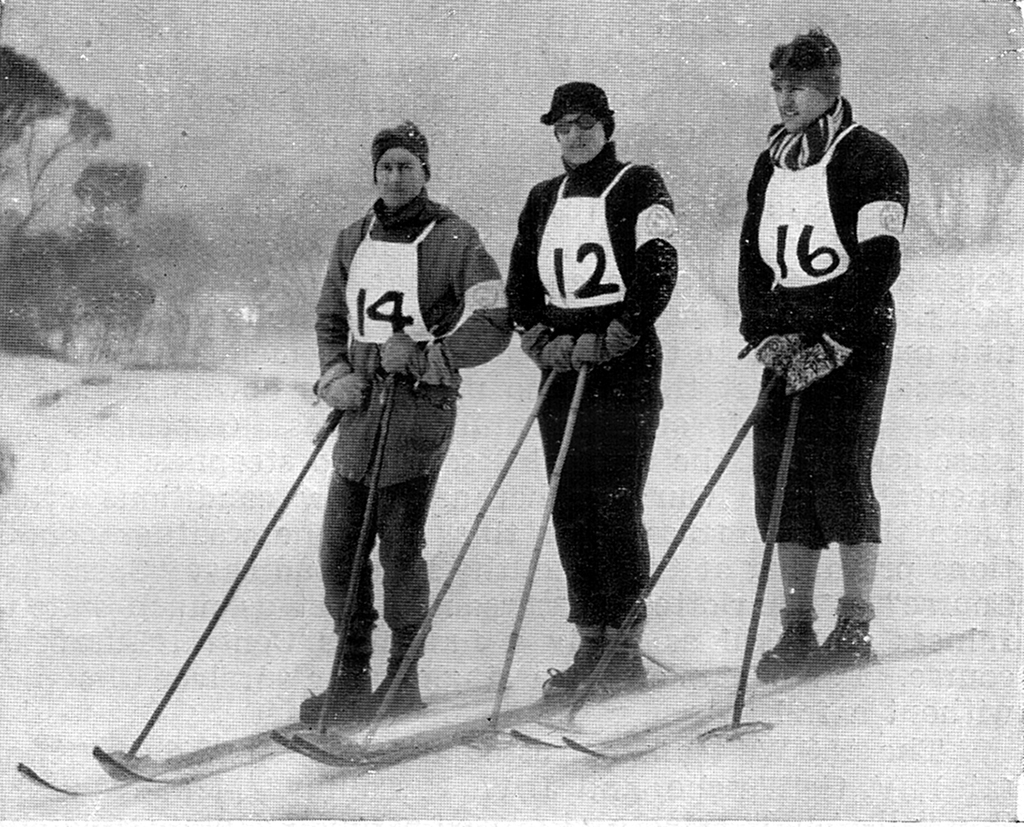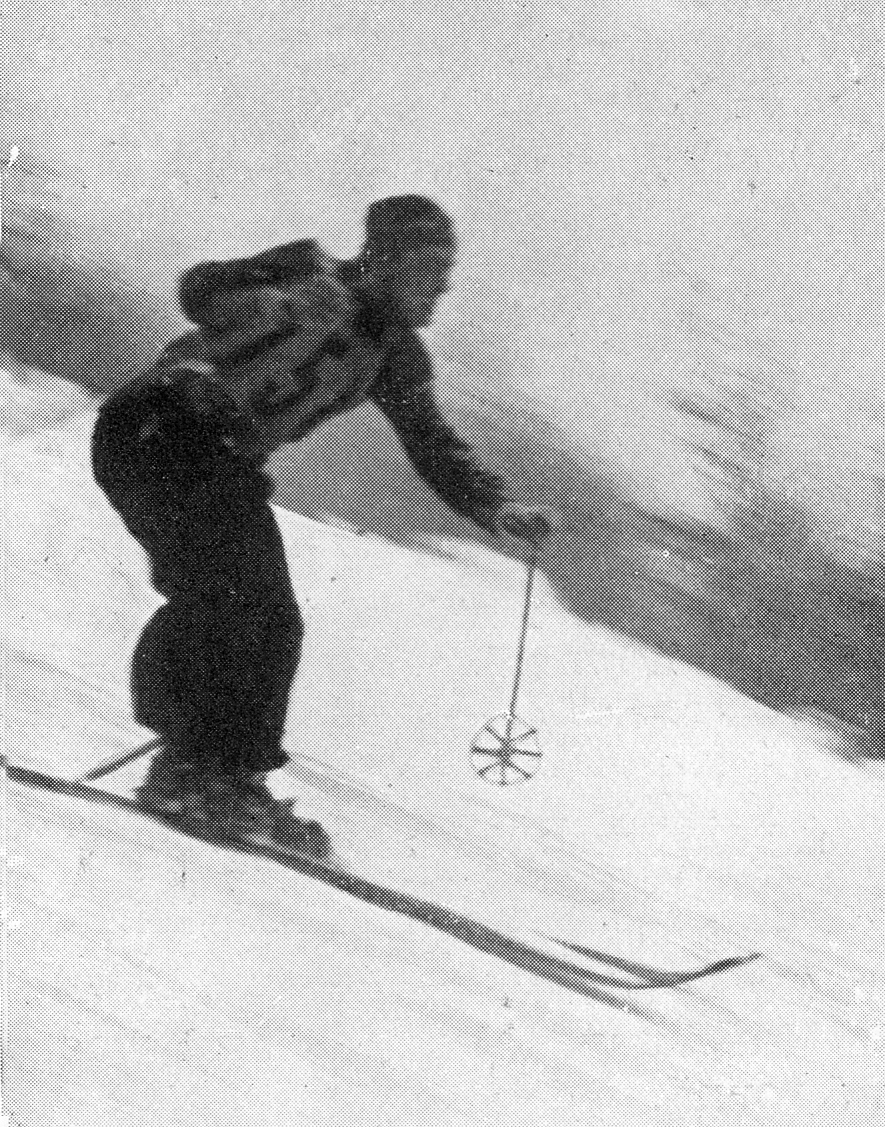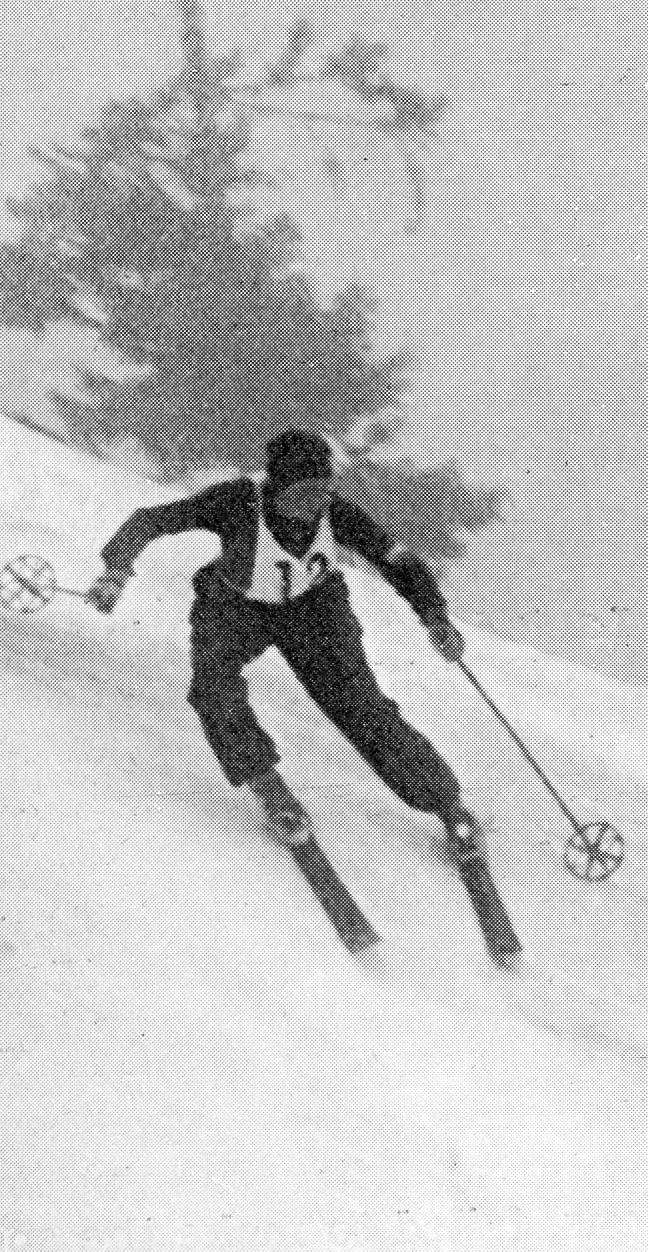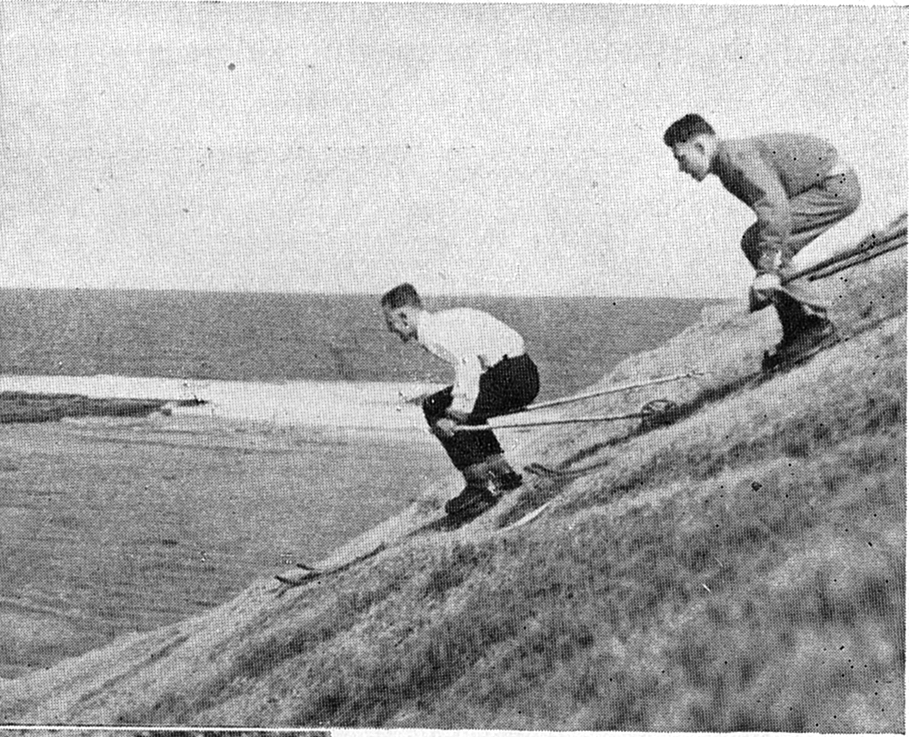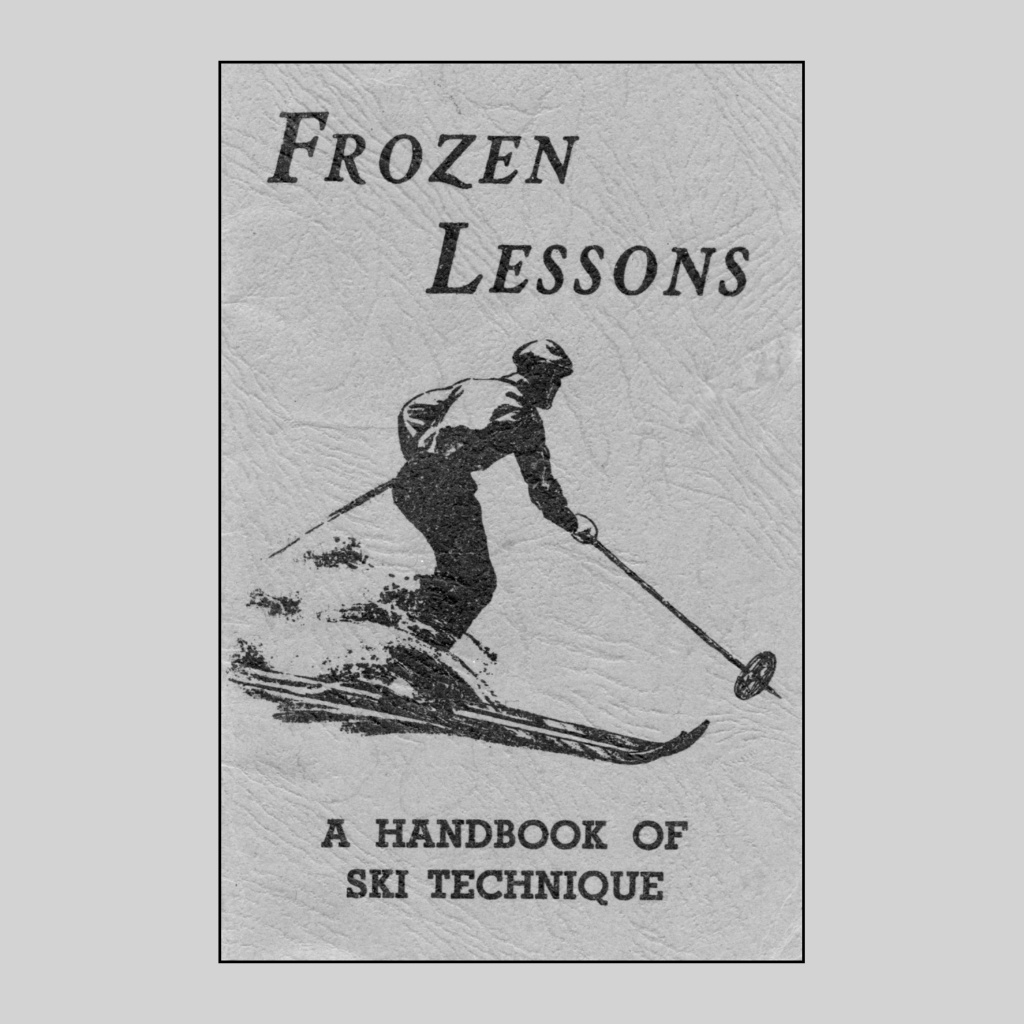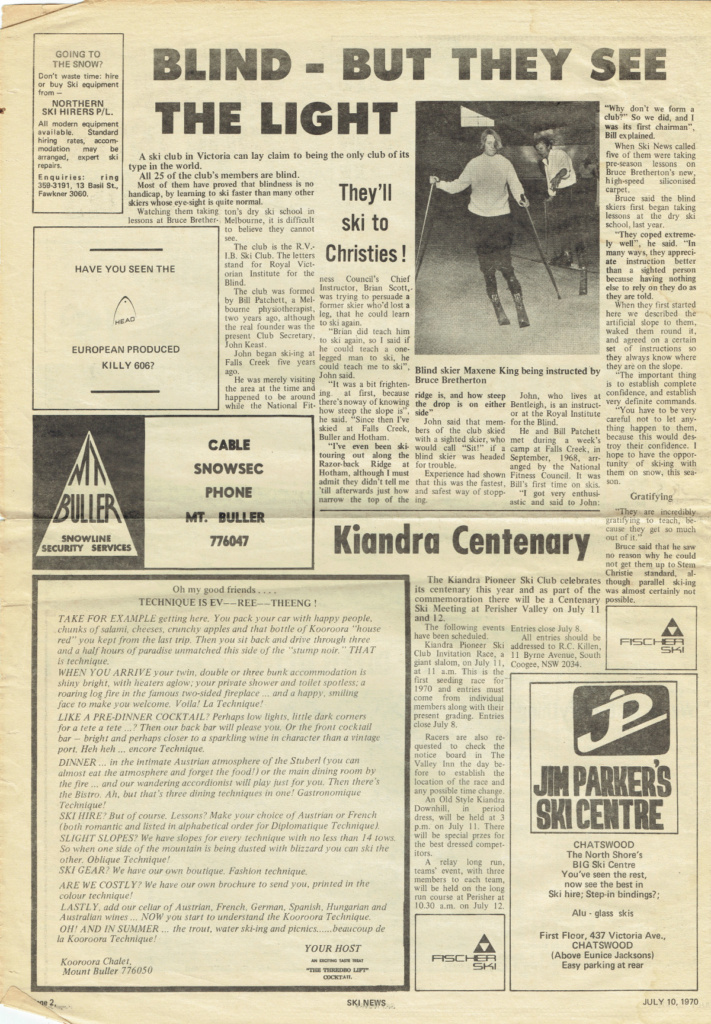Alpine Skiing
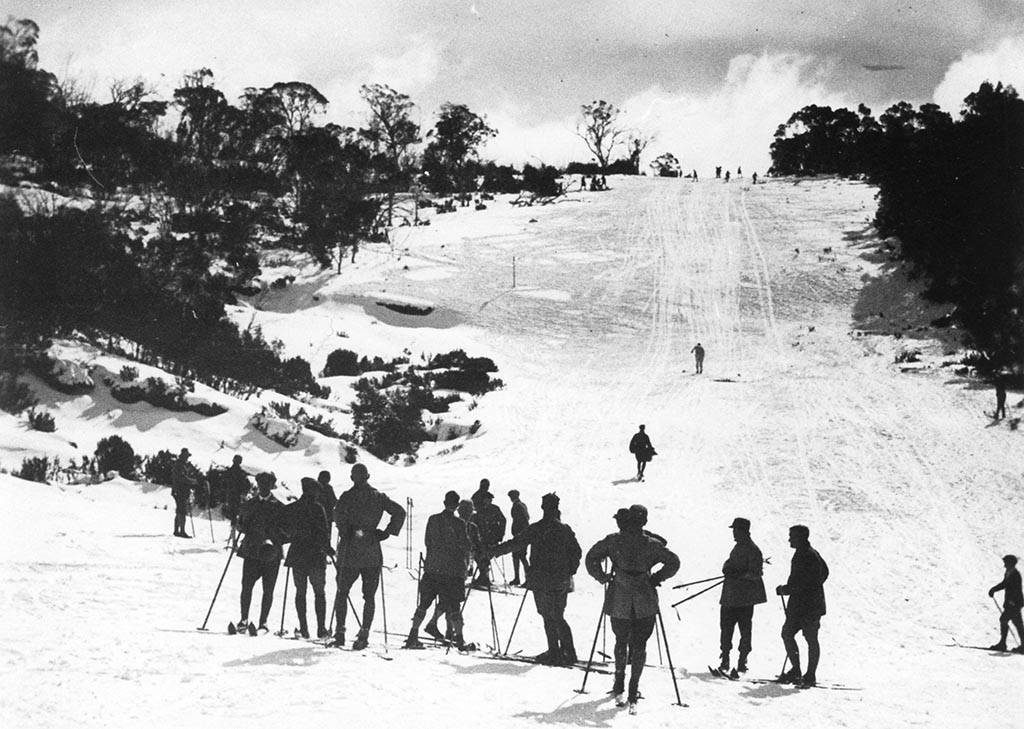
This page is concerned with the development of Alpine Skiing in the Kosciuszko area. Alpine skiing commenced in 1909 with the opening of the Hotel Kosciusko. At that time none of the skiers had any idea about how to ski down a slope other than to ski straight down (schuss). It was five or six years before anyone could make a turn and these were skiers who had been to Europe, a very small number. The Kosciusko Alpine Club (founded in 1909) had only one alpine race, a downhill, until the 1930s when alpine skiing really got underway. It is worth mentioning that alpine skiing was not a part of the first (1924), second (1928) or third Winter Olympics and only made its appearance at Garmisch Partenkirchen, in 1936.
Alpine Skiing Timeline
-
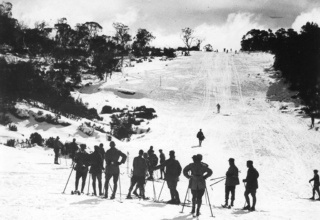
Alpine Skiing at the Hotel Kosciusko, the Kerry Course
Most of the skiing around the Hotel Kosciusko was very gentle but, within 600 metres of the Hotel, in the direction of Perisher was the Kerry Course, named after Charles Kerry. In a heavily timbered area the Kerry Course was very unusual in that it did not need to be cleared of timber. It was...
-
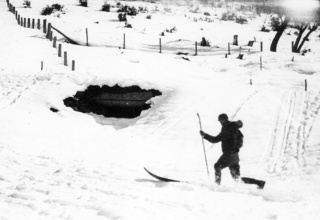
R.F. Angus
The first person recorded as being able to make a turn at the Hotel Kosciusko was R.F. Angus from South Australia. He astonished everyone by being able to climb up the Grand Slam on skis and being able to do a telemark turn, initially solely as a means to stop.
-
KAC introduces proficiency tests
The Kosciusko Alpine Club (KAC), the only club at Kosciusko introduces the first skiing proficiency tests in Australia modelled on the Third Class Test of the Ski Club of Great Britain. As part of this test the candidate had to do 4 stemming turns.
-
Ski Council of NSW runs first 4-event Australian Championship
The Ski Council of NSW runs the first 4-event Australian Championship. The Slalom and Jump were run at Pipers Gap (Smiggin Holes) and the Downhill and Langlauf (Cross-Country) at Charlotte Pass.
-
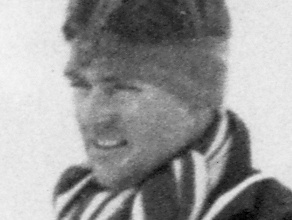
John Collins, first 4-event Australian Champion
The first 4-event Australian Championship was won by John Collins from Beaudesert, Queensland. Collins had studied at Cambridge and skied in Switzerland in the late 1920s. He was the first skier at Kosciuszko who could turn and slalom properly.
-
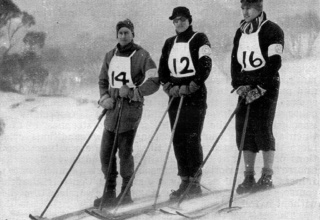
First Interstate Race
The first interstate race between NSW and Victoria was held at the Chalet, Charlotte Pass in conjunction with the National 4-event Championships. Representing NSW were L-R: Venn Wesche, Cam McFadyen and John Collins.
-
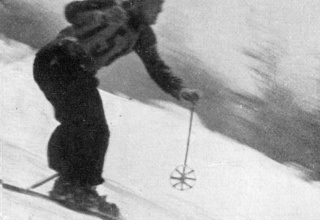
Tom Mitchell
Tom Mitchell was Australia’s outstanding slalom skier during the 1930s and was Australian Alpine Combined Champion (Slalom plus Downhill) from 1931-1935. In 1931 he competed in the first FIS Downhill at Murren and again in the FIS races in Innsbruck in 1933. The photo shows him competing in Innsbruck.
-
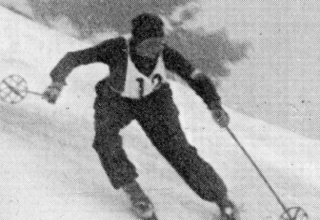
Kit Tinsley
In the same way that Tom Mitchell dominated Men’s alpine skiing during the 1930s, Kathleen (Kit) Tinsley dominated the women’s events. Kit also competed in the FIS events in Innsbruck in 1933. The photo shows Kit competing in Innsbruck.
More articles covering the history of Alpine Skiing
Dry skiing: Onion grass, seaspray and toothbrushes
Two members of Snow Revellers at Long Reef, 1936 by Wendy Cross The history of dry skiing in Australia is a chequered one, with almost every type of ‘dry’ surface promoted at some stage and new ones invented almost every decade. Some forms of dry skiing, such as the classes held on grass during the…
Frozen Lessons
This small handbook of ski technique was published by the Kosciusko Alpine Club in 1936. It was prepared by Bob Ward and Arthur Stone with the help of Ernst Skardarasy. Skardarasy was from Austria and arrived at the Kosciusko Chalet for the 1935 season as a ski instructor. The handbook was a great success and…
Teaching Blind Skiers, 1970
Although this was not the Perisher Range, the Royal Victorian Institute for the Blind Ski Club started in 1970. It was arguably the first ski club specifically for the sight impaired in the world.
